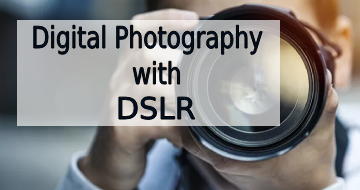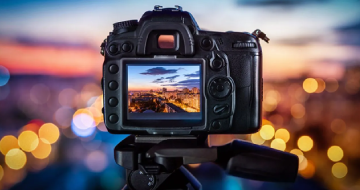IIRF Online > Photography & Video > Photography > Digital Photography > Digital Photography for Beginners with DSLR cameras
Digital Photography for Beginners with DSLR cameras by Udemy
Learn how to take stunning photographs by mastering both the technical and creative sides of digital photography.
Course Highlights
- Instructions on how to hold your camera correctly, which will help you to get sharp photographs.
- Sound advice on how to choose the right camera lens for each situation.
- The necessary confidence to change the most important camera settings correctly at the right time, which will allow you to get perfect photos every time.
- The ability to compose photos that are well balanced and very pleasing to the eye.
- The skill to spot creative photographic opportunities that will make your photos stand out from the rest.
- The ability to take stunning photographs that tell stories of your vacations, adventures and functions, capturing memories in the process.
Skills you will learn!
Curriculum
4 Topics
Introduction
Overview of the course.
Lecture 3: What you need with you.
Ice-breaker: Spot the mistake!
7 Topics
Introduction
Is my camera good enough? Different makes and models.
Choosing the right lens for the right occasion.
How to hold your camera correctly when taking photos.
Do I need a monopod tripod or beanbag?
The limitations of your DSLR camera.
Conclusion
11 Topics
Introduction
Choosing the right shooting mode.
File format size and quality.
White balance and Metering mode.
Drive mode. Shooting like a pistol vs. shooting like a machine gun.
Auto focus mode. Is your subject moving or standing still?
Focus points. Selecting only one or activating them all.
ISO. Ensuring that you get sharp photos in low light conditions.
Exposure compensation. Making your images lighter or darker.
Conclusion
Camera Settings Quiz
6 Topics
Introduction
Influencing depth of field in Aperture Priority.
Freezing action or capturing movement in Shutter Priority.
Using scene selections (those little pictures) as a backup plan.
BONUS LECTURE: Introduction to the Exposure Triangle
Conclusion
7 Topics
Introduction
Front light - taking colourful and representative photographs.
Side light - highlighting texture and capturing three dimensional images.
Back light - capturing dramatic silhouettes.
Diffused light - shooting in overcast conditions.
Flash light - using the camera's own artificial light source.
Conclusion
9 Topics
Introduction
Camera orientation - holding your camera horizontally or vertically.
Taking excellent portrait photos - 4 steps to blur the background.
Applying the Rule of thirds to get better balance in your images.
Leave enough space around your subject.
How leading lines draw your eyes into the photograph.
Different angles for new exciting perspectives.
5 steps to perfect composition!
Conclusion
10 Topics
Introduction
Look for reflections.
Use natural frames.
Play with colour.
Use repetition.
The power of scale.
Tell a story.
Create stars!
Panning shots!
Conclusion
5 Topics
Use your photos!
A summary of what you've learnt.
The way forward - how to keep improving your photography...
Download a set of course notes in PDF format.
Bonus Lecture.

Digital Photography for Beginners with DSLR cameras

